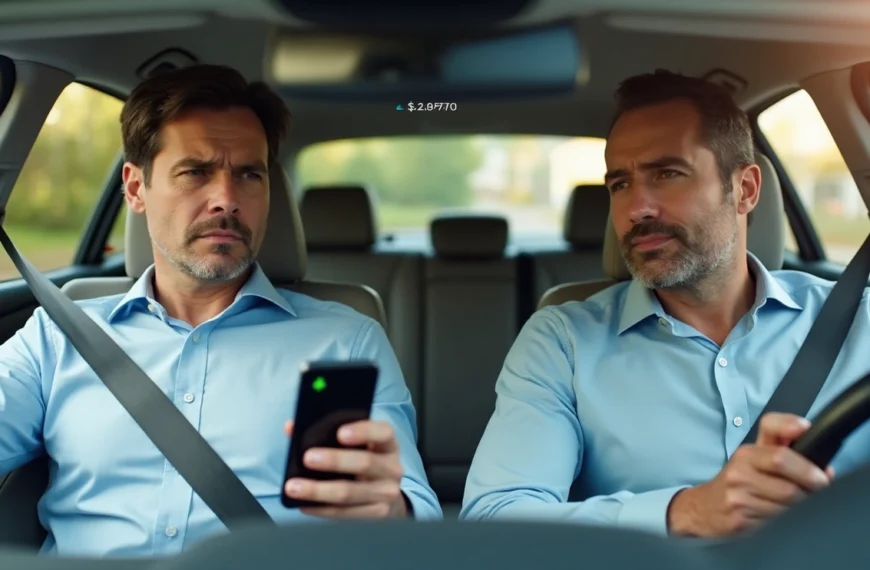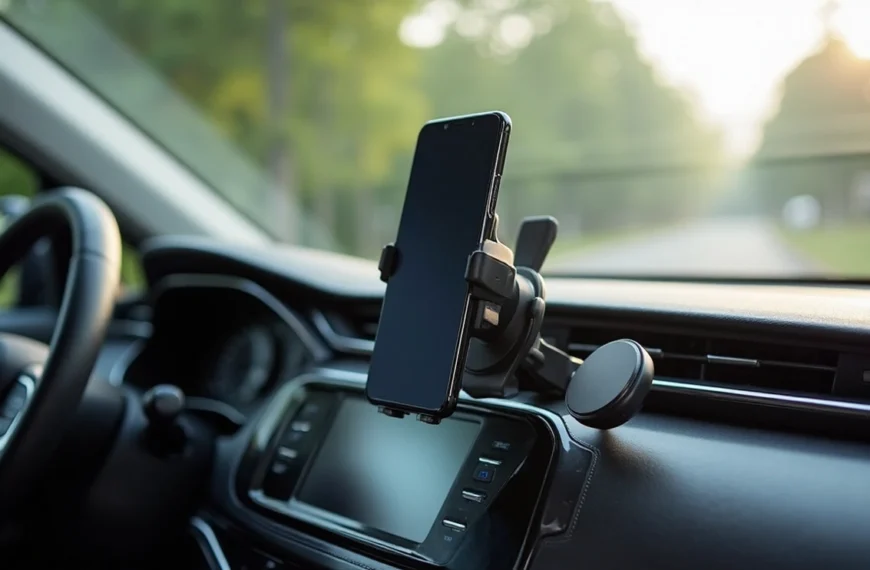Usage based insurance helps drivers like Peggy Coleman save up to 49% on their car insurance premiums. The system tracks actual driving behavior instead of just using demographic information to set rates.
A LexisNexis study shows that 88% of drivers want their insurance rates based on their driving habits. UBI programs use telematics technology to monitor several factors like speed, acceleration, and braking patterns. Insurance companies often give immediate discounts just for signing up, and savings can range from 5% to 50%. But the reality isn’t always positive – over 40% of UBI insurance participants actually saw their rates go up according to a 2022 JD Power report.
Let’s look at what UBI insurance companies really offer in 2025, and whether this popular option aligns with your driving style and budget goals.
Why usage-based insurance is gaining popularity in 2025
Image Source: Geotab
Traditional auto insurance costs have skyrocketed, creating an ideal climate for usage-based insurance (UBI) to thrive in 2025. Drivers now look for ways to escape premium hikes while insurance companies use new technologies to create individual-specific coverage options.
Rising car insurance costs
Auto insurance premiums have hit alarming levels, putting financial pressure on millions of Americans. The average cost of full coverage car insurance jumped by $625 between 2023 and 2025 – a massive 30% increase. Rates went up 17% from 2023 to 2024 and climbed another 12% from 2024 to 2025.
Some good news exists amid these worrying numbers. Premium increases seem to be slowing down. Experts predict a 7.5% average rate increase in 2025, lower than the 16.5% spike seen in 2024. The average yearly cost of auto insurance will still hit a record $2,101 in 2025. This steep rise pushes more drivers to look at different insurance options.
Consumer demand for fairer pricing
Traditional insurance heavily depends on demographic factors such as age, gender, and credit score—metrics that many people see as unfair. A nationwide survey revealed that 76% of Americans believe a “fair annual cost” for state-mandated insurance for a typical good driver should not exceed $500.
Economic pressures force consumers to make tough choices. People often cut their coverage to dangerous levels when choosing between auto insurance and basic needs like medication or food. People’s frustration with standard pricing models has created perfect conditions for UBI to grow.
JD Power’s data shows this change clearly. Only 15% of auto insurance shoppers received UBI offers in 2024, but 19% of them signed up—up from 12% in 2020. New UBI customers report satisfaction scores that are 64 points higher than traditional insurance customers.
Growth of connected vehicles
Connected vehicles’ rapid growth forms the technical foundation for UBI’s expansion. Global connected vehicle numbers will almost double by 2027, growing from 192 million in 2023 to 367 million. These vehicles create huge amounts of data—up to 25 GB per hour. This data helps insurers learn about driving patterns better than ever before.
Smart connectivity has changed how companies underwrite and price auto insurance. More connected vehicles make “pay how you drive” models a natural fit. Insurance companies now track actual loss-causing behaviors like braking, acceleration, and speed instead of relying on self-reported information.
The UBI market shows impressive growth and will reach $105 billion by 2027, with a strong 23.61% yearly growth rate.
How usage-based auto insurance actually saves you money
Image Source: CarInsurance.org
“UBI programs offer up to 40% discounts for safe, low-mileage drivers” — Clearsurance Research Team, Insurance industry analysts and researchers
Auto insurance companies traditionally set rates based on demographics, not driving performance. Now, usage-based auto insurance changes everything by giving careful drivers the financial rewards they deserve.
Discounts for low mileage and safe habits
UBI programs work on a simple principle: better driving leads to lower payments. Telematics technology helps insurance companies track several driving behaviors:
- Speed and adherence to speed limits
- Acceleration and braking patterns
- Cornering and turning habits
- Time of day driving occurs
- Phone usage while driving
- Total miles driven
Insurance companies offer savings right from the start. Progressive gives an automatic discount when you try their Snapshot program. Drivers can earn discounts between 5% to 50% based on their driving habits after the monitoring period ends. The SmartRide program from Nationwide rewards drivers with up to a 40% discount at renewal. Their pay-per-mile program SmartMiles helps drivers save 25% compared to regular policies.
Gamification and behavior-based rewards
The insurance industry now uses games to promote safer driving habits. Plymouth Rock shows how this works with their telematics program. They let up to 10 family members compete for streaks, badges, and top spots on a leaderboard.
This fun approach changes insurance from a forgotten monthly expense into something drivers actively participate in to improve their habits. Both sides win – drivers save money and insurance companies deal with fewer claims.
Examples of real savings from UBI users
Ground application shows how well UBI works. Peggy Coleman, a sales manager from Tucson, watched her yearly premium drop from $1,750 to $1,056—a 49% reduction—after she joined Allstate’s Milewise program. A Progressive Snapshot user saw his monthly costs fall from $120 to $65, cutting his expenses almost in half.
Yes, it is true that UBI savings depend on your situation. Drivers who cover fewer miles often get the biggest discounts, whatever their other driving habits might be. To name just one example, some programs focus so much on mileage that drivers with long commutes might not get discounts even if they drive safely.
What to consider before signing up for UBI insurance
You should think over several factors before jumping into a usage-based insurance program. This will help you decide if it’s right for you. UBI might save you money, but not everyone gets the same benefits.
Are you a good fit for usage based car insurance?
Drivers who show safe driving habits consistently get the most out of usage-based insurance. We focused on people who use defensive driving techniques and stick to regular patterns – they see the most important savings. Your rates might go up instead of down if you drive aggressively, live in risky areas, or spend lots of time in heavy traffic.
You need to take an honest look at your driving style. This is a vital step because while ads promise great discounts, some drivers end up paying more with UBI. A 2022 JD Power report shows that over 40% of consumers who tried UBI programs saw their rates climb instead of fall.
How much do you drive?
Your mileage is the foundation of usage-based insurance eligibility. Pay-per-mile insurance works great if you don’t drive much. This includes:
- Remote workers
- College students
- Retirees
- Those who primarily use public transportation
- Owners of rarely used second vehicles
Americans drive approximately 13,500 miles annually. Most programs suggest you’ll save money if you drive less than 8,000-10,000 miles yearly. Before you sign up, calculate your costs this way: Monthly base rate + (Per-mile rate × Approximate monthly mileage).
Do you mind sharing your driving data?
Data privacy is the most important concern for many potential UBI customers. The numbers tell the story – 68% of drivers worry about their data privacy in telematics programs. There’s more – 56% have concerns about data security, and 59% question the accuracy of collected data.
Insurance companies don’t say much about how they collect and protect your data. Only 24% of users read the privacy policies fully. You should know that your driving data might help determine fault in accidents or serve as evidence in criminal cases.
Can your habits be improved?
UBI programs are a great way to get better at driving. A 2022 insurance industry survey shows 45% of drivers made big safety-related changes after trying a telematics program. Another 35% made smaller adjustments. About 25% of participants kept these positive changes permanently.
You can maximize your savings by avoiding late-night trips, especially between midnight and 4 a.m., when accidents happen more often. The program’s feedback helps you spot areas where you need improvement. Remember to focus solely on driving – no multitasking behind the wheel.
Top tips to maximize your savings with UBI
Image Source: Hyundai Newsroom
“Insurers monitor habits like acceleration, braking, speed, and cornering to assess how safely you drive. Consistently safe driving can lead to lower premiums.” — Insurify Research Team, Insurance technology analysts and researchers
Smart driving habits and good program management help you get the most out of usage-based insurance. These expert tips will help you save money and become a safer driver.
Avoid late-night driving
Your risk profile goes up when you drive between midnight and 4 AM. Accidents happen more often during these hours, especially on weekends. Insurance companies track your driving times because some hours are safer than others. Scheduling your errands and trips during daylight hours will keep you safer and boost your premium savings if you use usage-based insurance.
Drive smoothly and avoid hard braking
Your driving score depends on how well you handle traffic flow through acceleration and braking patterns. Hard braking will lower your score on most usage-based auto insurance platforms. You can avoid sudden stops by keeping enough distance between vehicles.
Plymouth Rock’s YUBI program, like many others, rewards drivers who:
- Avoid unnecessary acceleration
- Keep steady speeds within legal limits
- Use gradual, controlled braking
Use feedback from the app to improve
Usage-based insurance companies give detailed feedback about your driving habits. Regular checks of this information show you where you need to improve. A newer study by AAA shows that drivers who used their driving dashboards reduced risky behaviors. The study found that 54% of drivers found weekly text message feedback helpful to change their behavior.
Choose the right time to enroll
The right timing can help you save more money. Wait until after any planned road trips with lots of driving before you sign up. Your best baseline comes from a period when you drive less. People who retire, work from home, or stay home with kids might get better discounts because they usually drive during off-peak hours.
These patterns can turn usage-based insurance from a simple discount into a real money-saving strategy.
Conclusion
The Future of Auto Insurance: Is UBI Right for You?
Usage-based insurance emerges as a compelling alternative to traditional auto insurance models in 2025. Drivers who are tired of sky-high premiums based on demographic data instead of actual driving behavior now have options that reward safe habits. Notwithstanding that, UBI programs come with both opportunities and challenges based on your specific situation.
Safe drivers can see substantial financial benefits. People with low mileage might get premium reductions ranging from 5% to 50%, as shown by Peggy Coleman’s remarkable 49% discount story. These programs also boost safer driving through instant feedback and gamification, which creates lasting positive habits.
Privacy issues remain the biggest concern. Many drivers don’t want to share their driving data because they fear misuse or wrong assessment. Drivers who often drive at night, have long commutes, or show aggressive driving patterns might face premium increases instead of discounts.
Drivers should take an honest look at their habits before enrolling. UBI works best if you:
- Drive fewer than 10,000 miles annually
- Maintain consistent, defensive driving patterns
- Feel comfortable sharing driving data
- Want to adjust behaviors based on feedback
Connected vehicles and sophisticated telematics technology suggest UBI will become more common. This radical alteration shows how insurers assess risk differently – moving from demographic predictions to immediate analysis of actual driving behavior.
Safe drivers benefit most from this progress. People who actively work to improve their habits through app feedback often find financial rewards and better safety awareness. UBI changes insurance from a passive expense into an interactive experience with clear benefits.
Auto insurance’s future clearly involves more personalization and data-driven pricing. Traditional models still exist, but usage-based options are worth thinking over, especially for safe, low-mileage drivers who want fair rates based on performance rather than statistical probabilities.
FAQs
Q1. How does usage-based insurance (UBI) work? Usage-based insurance uses telematics technology to monitor driving behavior, including speed, acceleration, braking, and mileage. Insurers use this data to determine premiums, potentially offering discounts to safe, low-mileage drivers.
Q2. What are the potential savings with UBI? Savings can vary widely, but safe drivers with low mileage may see premium reductions ranging from 5% to 50%. Some drivers have reported cutting their insurance costs nearly in half after enrolling in UBI programs.
Q3. Are there privacy concerns with usage-based insurance? Yes, privacy is a significant concern for many drivers. UBI programs collect detailed driving data, and some worry about how this information might be used or secured. It’s important to carefully read the privacy policy before enrolling.
Q4. Who benefits most from usage-based insurance? UBI tends to benefit safe drivers who drive less than 10,000 miles annually, such as remote workers, retirees, or those who primarily use public transportation. Drivers with consistent, defensive driving habits are likely to see the most savings.
Q5. How can I maximize my savings with UBI? To maximize savings, avoid late-night driving, practice smooth acceleration and braking, use feedback from the insurance app to improve your driving habits, and choose an optimal time to enroll when your driving patterns align with the program’s preferences.
References
[1] – https://www.repairerdrivennews.com/2025/04/07/aaa-study-on-ubi-effectiveness-finds-improvements-in-speeding-hard-braking-rapid-acceleration-phone-use-unchanged/
[2] – https://www.theverge.com/news/642121/driving-smartphone-app-track-safety-ubi-aaa-research
[3] – https://consumerfed.org/cfa-studies-on-the-plight-of-low-and-moderate-income-good-drivers-in-affording-state-required-auto-insurance/
[4] – https://www.spglobal.com/market-intelligence/en/news-insights/articles/2024/3/consumer-checkup-rising-us-auto-insurance-costs-creating-a-toxic-problem-80924218
[5] – https://www.iii.org/article/background-on-pay-as-you-drive-auto-insurance-telematics
[6] – https://www.via-id.com/en/the-evolution-of-the-insurance-world-in-the-age-of-connected-vehicles/
[7] – https://www.mckinsey.com/industries/financial-services/our-insights/connected-revolution-the-future-of-us-auto-insurance
[8] – https://grapeup.com/blog/connected-vehicles-impact-the-insurance-industry/
[9] – https://www.progressive.com/answers/usage-based-car-insurance/
[10] – https://www.forbes.com/sites/christopherelliott/2021/09/11/you-can-save-money-with-usage-based-auto-insurance—but-should-you/
[11] – https://www.nationwide.com/personal/insurance/auto/usage-based-insurance/
[12] – https://www.bankrate.com/insurance/car/usage-based-insurance/
[13] – https://content.naic.org/article/consumer-insight-want-your-auto-insurer-track-your-driving-understanding-usage-based-insurance
[14] – https://www.forbes.com/advisor/car-insurance/usage-based-insurance/
[15] – https://www.nerdwallet.com/article/insurance/pay-per-mile-car-insurance
[16] – https://www.autoinsurance.com/research/telematics-usage-study/
[17] – https://www.checkbook.org/national/auto-insurance/articles/Should-You-Let-Your-Insurer-Invade-Your-Privacy-in-Exchange-for-a-Discount-7832
[18] – https://www.plymouthrock.com/resources/what-is-ubi-in-insurance
[19] – https://www.plymouthrock.com/resources/advantages-of-usage-based-insurance
[20] – https://www.harrylevineinsurance.com/usage-based-insurance-the-easiest-safe-driving-discount-there-is/














![No Win No Fee Lawyers: The Hidden Truth About Settlement Cuts Legal representation through no win no fee lawyers gives clients a way to fight cases without paying anything upfront. Many clients don't know that these services take a big chunk of money after winning the case. Lawyers usually take 25% to 40% of what you win as their contingency fee. The amount lawyers take from settlements can add up fast. A $100,000 settlement means your attorney gets $30,000 if they charge a 30% fee after winning your case. Your solicitor's cut might be £10,000 from a £30,000 compensation award, based on your agreement percentage. This payment model stays pretty much the same for no win no fee lawyers in different places, though percentages can change. This piece breaks down what you need to know about contingency fee deals. You'll learn about standard fee ranges, extra costs beyond the basic fee, and times when this payment setup might not work in your favor. Smart clients should think over these money matters before signing up with a lawyer to make better choices about their legal help. What No-Win No-Fee Really Means Image Source: Express Legal Funding A no-win no-fee arrangement, also called a Conditional Fee Agreement, changes the way people get legal help. This payment approach removes the need to pay legal fees upfront and creates a partnership between clients and their attorneys. How contingency fees work No-win no-fee agreements are based on contingency fees. Lawyers get paid only when they win compensation for their clients. Most lawyers take between 25% and 40% of the final amount, based on how complex the case is and where it's filed. Lawyers take their cut after winning the case. To name just one example, see a case where a lawyer wins £30,000 in compensation with a 33% fee - they would receive £10,000. On top of that, some law firms use sliding scales where they charge less for quick settlements and more if the case goes to trial. The law requires a written agreement before any work starts. This paperwork spells out the lawyer's percentage, what costs you'll need to cover, and other key details. What happens if you lose the case The meaning behind "no-win no-fee" is clear - losing your case means you won't pay your lawyer anything. All the same, you should know about a few money-related details. You won't owe your lawyer when you lose, but some deals might make you pay for court fees, expert witnesses, or other case expenses. The other side could also ask you to pay their legal costs. Many lawyers suggest getting "After Event" insurance to protect their clients. These policies cover any costs if you lose your case, which makes the no-win no-fee setup much safer. Why lawyers offer this model Lawyers want to make legal help available to more people, so they offer these payment plans. This setup helps people who don't have much money take legal action when they have valid claims. The payment structure motivates lawyers to work hard. They only get paid by winning cases, which pushes them to get the best results possible. Lawyers carefully assess each case before taking it on a no-win no-fee basis. They usually accept cases that have a good chance of winning, since they put in lots of time and resources without any guaranteed payment. The Real Cost: How Much Do Lawyers Take from a Settlement Image Source: Greiner Law Corp. The true cost of no-win no-fee legal representation becomes clear once we look at contingency fees. Many clients feel surprised to see a big chunk of their settlement checks going to their attorney's fees. Typical percentage ranges (25%–40%) No win no fee lawyers typically ask for 25% to 40% of the total settlement amount. Personal injury attorneys usually take 33.3% (one-third) of the awarded compensation[101]. Lawyers and clients agree on this percentage before any work starts on the case. Several factors shape the final percentage. Your chances of winning, case complexity, and the work to be done play key roles in determining the attorney's cut. Some areas have laws that cap the maximum contingency fees for specific types of cases. Sliding scale based on case complexity Law firms often use a tiered fee system that changes with the case stage and complexity. This scale rewards quick settlements while paying attorneys fairly if more work becomes needed. The fee might start at 30% if the case settles before lawsuit filing. This number could climb to 35% after filing or reach 40% if the case goes to trial. Law firms often group cases by complexity: 10%-20%: Simple cases with straightforward settlements 25%-35%: Typical personal injury cases 35% and above: Complex cases requiring extensive resources Examples of payout breakdowns These ground examples show how fees affect settlements: A $15,000 settlement with a 33.3% contingency fee.pdf) puts $5,000 in the attorney's pocket, leaving $10,000 for the client. Similarly, from a $100,000 settlement with a 33% fee, the attorney gets $33,000 while the client receives $67,000[102]. Complex cases tell a different story. A $100,000 settlement with a 30% fee plus $5,000 in extra costs leaves $65,000 for the client after all deductions. These fees substantially change the client's final payout. Hidden Costs You Might Not Expect Image Source: Nelson Personal Injury Lawyers Beyond percentage-based fees, clients often feel surprised by extra costs that can reduce their final compensation by a lot. These hidden costs show up in the fine print of no-win no-fee agreements. You should think over these details before signing. Court filing and expert witness fees Legal proceedings come with unavoidable court filing fees. These charges differ by jurisdiction. They usually range from $30 for small claims to several hundred dollars for complex civil lawsuits. Expert witnesses can be expensive, with hourly rates ranging from $150 to $1,000 based on their credentials and testimony complexity. Expert witnesses charge more for court appearances than consultation work because of added pressure and prep time. Clients might still need to pay experts for their prep work even if the case settles before trial. Medical report and investigation costs Medical documentation is a vital part of many legal claims. These costs include fees to release medical records, create specialized reports, and prepare documents. Investigation costs cover evidence gathering, police reports, witness interviews, and other fact-finding work needed to build a strong case. Of course, some firms say they'll cover these expenses upfront, but clients don't completely avoid these costs. When these costs are deducted from your compensation Law firms take these expenses from the settlement amount before they calculate their percentage fee, though each firm handles this differently. Some lawyers subtract these costs after figuring out their contingency fee, which changes how much money clients end up with. Most firms pay case-related costs during the process and get their money back from the settlement. The defendant usually pays most simple legal costs and disbursements in successful cases, but not always everything. Insurance protects clients from costs in unsuccessful claims at many law firms, but this protection isn't guaranteed. Clients should review their agreements carefully since they might still need to pay specific expenses even if they lose their case. When No-Win No-Fee Might Not Be the Best Option Contingency fee arrangements give many people access to justice. However, this payment model doesn't always work in a client's best interests. Knowing these limitations helps clients make better decisions about their legal representation. Cases with unclear liability Lawyer no win no fee arrangements work best in cases where fault is clear. We assessed the probability of success before taking contingency cases. Lawyers might turn down cases if there isn't enough evidence of the other party's negligence or if liability isn't certain. Cases with multiple responsible parties create more challenges. The situation gets complicated fast when several parties share liability. Lawyers are less likely to take these cases on contingency. They need to be confident they can prove the other party's negligence before accepting a case. Low-damage or low-payout claims Small claims often don't work well with the contingency model, even with real injuries. Cases that have minimal injuries or limited financial damages might not bring enough compensation to cover legal costs. The potential settlement needs to be big enough to pay for investigations, witness interviews and court fees. Personal injury lawyers often turn down cases where the "compensation potential" is too small. This doesn't mean the claim isn't valid - it just means the economics don't add up for a contingency arrangement. Situations where hourly billing may be better Hourly billing has clear advantages in certain cases. Clients see exactly what they're paying for - every hour worked and task completed. This model works well for cases that need lots of attention but don't have clear financial outcomes. Complex litigation with opposing parties works better with hourly billing and a retainer fee. Clients have more control over their case and don't feel pressured to settle quickly. Cases that need extensive preparation but have uncertain outcomes fit the hourly model better. Lawyers can spend the time needed without worrying about contingency limits. This approach often leads to better representation, especially for complex legal issues that need special expertise. Conclusion Understanding the Full Picture Before You Sign No-win no-fee arrangements offer legal representation without upfront costs. Of course, this seems attractive at first glance. In spite of that, you need to think about how these agreements can affect your final compensation. Legal fees usually range from 25% to 40% of your settlement - but that's just the start. You'll face more deductions like court filing fees, expert witness costs, and charges for medical documentation. What looks like a "free" service ends up taking a big chunk of your compensation to cover legal expenses. These arrangements work best in specific situations - cases with obvious liability, substantial damages, and solid evidence. If you have a low-value claim or complex liability issues, traditional hourly billing might serve you better. Without doubt, you should ask for clear explanations of all possible costs before signing anything. Read the fine print closely, especially when you have to deal with expenses in unsuccessful cases. Ask to see sample settlement breakdowns that show all deductions. This helps you picture what you might actually take home. Your choice to go with a no-win no-fee arrangement depends on your situation. This model helps if you don't have money to pursue valid claims. But if you have a strong case and enough funds, other fee structures might let you keep more of your compensation. Whatever payment model you choose, knowing exactly how much lawyers take from settlements helps you make better decisions. This knowledge lets you approach legal representation with real expectations and better control over your money. FAQs Q1. What percentage of a settlement do no-win no-fee lawyers typically take? No-win no-fee lawyers typically charge between 25% to 40% of the final settlement amount as their contingency fee. The exact percentage often depends on the complexity of the case and the stage at which it is resolved. Q2. Are there any hidden costs in no-win no-fee arrangements? Yes, there can be additional costs beyond the lawyer's percentage fee. These may include court filing fees, expert witness costs, medical report expenses, and investigation costs. These expenses are usually deducted from the settlement amount before or after the lawyer's fee is calculated. Q3. What happens if I lose my case in a no-win no-fee arrangement? If you lose your case, you generally won't have to pay your lawyer's fees. However, you might still be responsible for certain expenses like court costs or the opposing party's legal fees. Many lawyers offer insurance to protect clients from these potential costs in case of an unsuccessful claim. Q4. When might a no-win no-fee arrangement not be the best option? No-win no-fee arrangements may not be ideal for cases with unclear liability, low-value claims, or complex legal issues requiring extensive preparation. In these situations, traditional hourly billing might be more appropriate and potentially more cost-effective for the client. Q5. Can I negotiate the percentage a lawyer takes from my settlement? Yes, the contingency fee percentage is often negotiable. It's typically agreed upon and formalized in writing before the lawyer begins working on your case. Don't hesitate to discuss the fee structure with your lawyer and ask for a detailed breakdown of potential costs and deductions.](https://consumersweek.com/wp-content/uploads/2025/06/No-Win-No-Fee-Lawyers-The-Hidden-Truth-About-Settlement-Cuts-870x570.webp)


